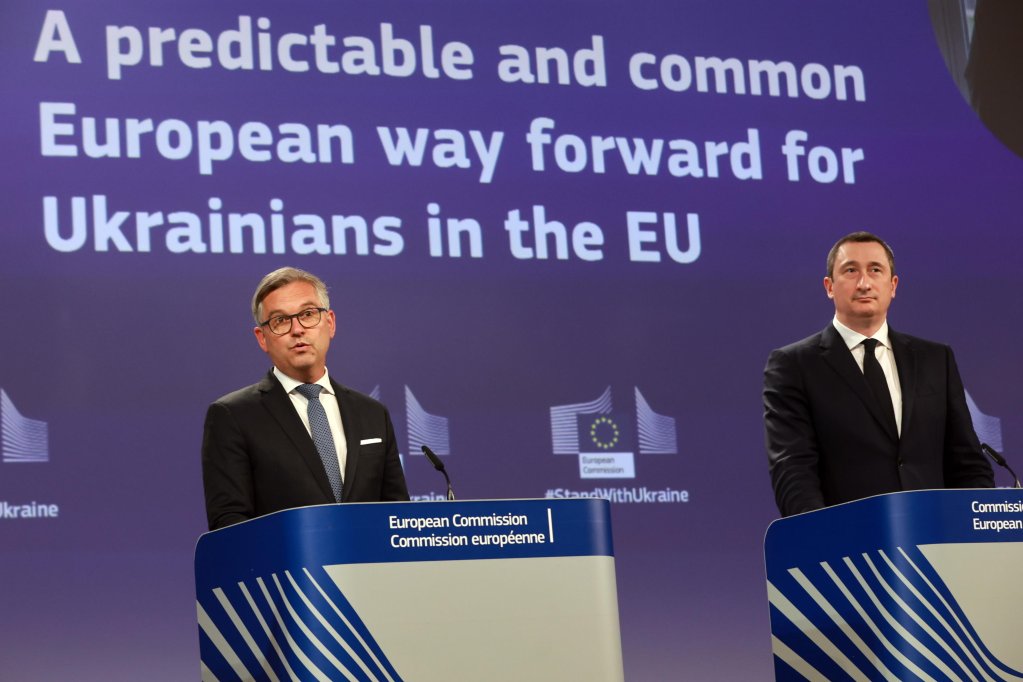EU countries have approved an extension of the temporary protection offered to Ukrainian refugees, allowing them to stay in the bloc until March 2027. The extension, which was already extended numerous times, is based on an assessment that the security situation in Ukraine remains critical.
The European Union will extend temporary protection measures for refugees from Ukraine until March 4, 2027.
The decision was announced on June 13 and was formally adopted by the Council on July 15.
The extension of temporary protection status applies to all Ukrainian nationals who have sought international protection in the EU since the Russian invasion of Ukraine in 2022.
Data from the EU Commission estimates that more than 4.3 million exiled Ukrainians enjoy temporary protection status. Under this particular protection regime, Ukrainian refugees are allowed to live and work in the EU without undergoing an asylum procedure. They are also given access to work and other social benefits such as healthcare, education, and housing.
"The extension until March 2027 is a signal to displaced people from Ukraine that it is not necessary to apply for asylum," the European Commission said in a statement. Additionally, the European Commission said that this would alleviate the current backlog of the overstrained asylum system.
During the announcement of the planned extension last month, the EC said, "The war in Ukraine continues and the conditions to allow repatriations in safe and secure conditions on a large scale do not exist."
Read Also
EU: Ukrainians allowed to leave and re-enter bloc under their protection status
Long-term solutions
In addition to extending the temporary protection status, the Commission is also looking at long-term solutions that include a coordinated return strategy once the security situation in Ukraine permits, and alternative residence options, such as work or study visas.

Ultimately, the aim is to establish a pathway to transition from temporary protection status to a regular residence permit for those who want to stay in the EU long-term. In parallel, a gradual return strategy will be explored to facilitate the repatriation of Ukrainian nationals who wish to return to their home country.
If the security situation in Ukraine improves before the new extended deadline of March 2027, the protection regulation could be lifted early.
Read AlsoUkraine's war refugees feel increasingly at home in Germany
Special Envoy
Last month, the EC designated former Home Affairs Commissioner Ylva Johansson as Special Envoy for Ukrainians in the EU. In this role, Johansson will work with national representatives in the Member States, international organizations and Ukrainian officials to facilitate the implementation of temporary protection measures, the integration of Ukrainian refugees, and the transition from it to more long-term residence or return.
Johansson will also oversee the setting up of Unity Hubs across the EU, which will serve as multi-purpose information centers to provide service, support and assistance to Ukrainians living abroad.
Temporary Protection Directive
The Temporary Protection Directive (TPD) is an EU emergency mechanism which is activated in exceptional circumstances, such as an exodus triggered by armed conflict. Other circumstances include climate-induced disasters that prevent people from returning to their home country.
The EU directive on temporary protection was adopted in 2001, in the aftermath of the mass displacement due to the armed conflict in the Western Balkan region -- Bosnia and Herzegovina and Kosovo. However, the TPD was activated for the first time as a response to Russia’s invasion of Ukraine.
